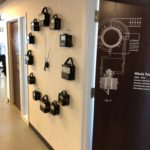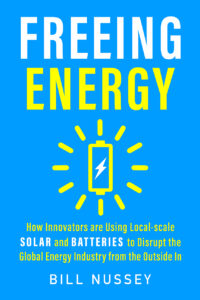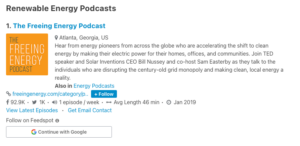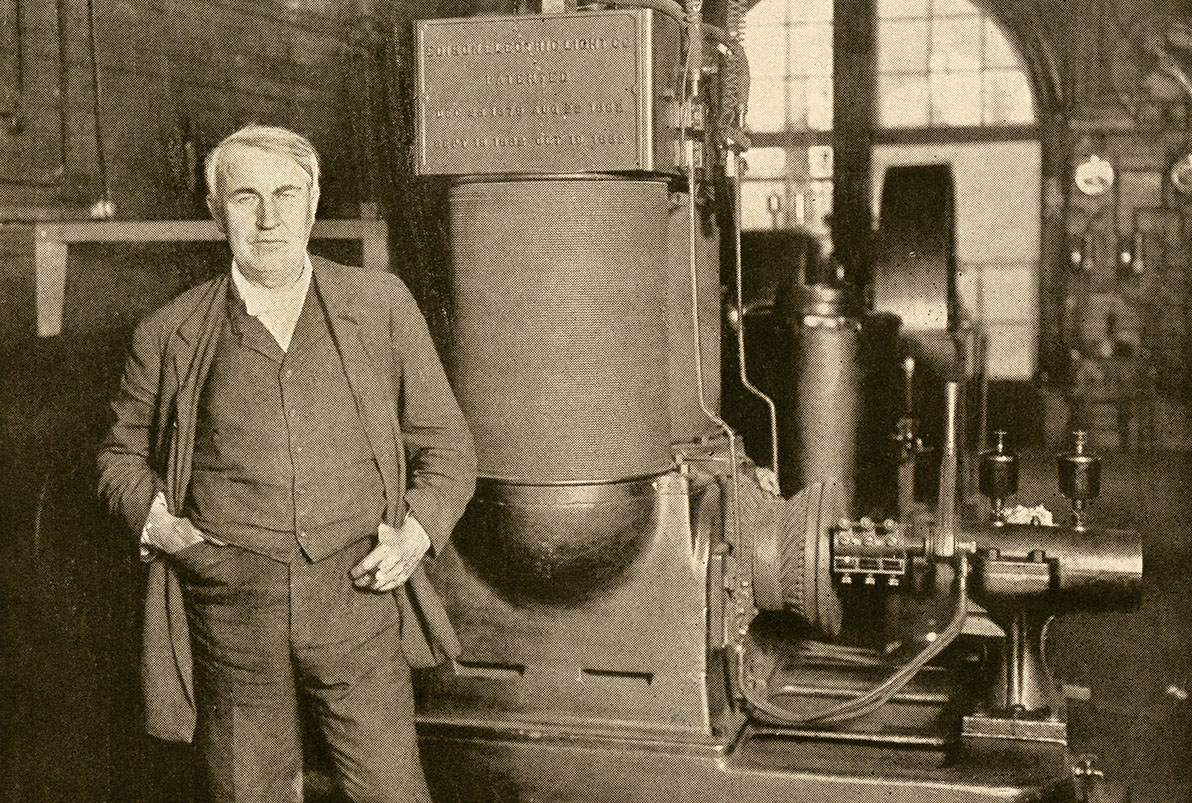
After years of relentless toil in his New Jersey laboratory, Thomas Edison created one of the most celebrated inventions in history: the first commercially practical light bulb. But it was just across the Hudson River, in Manhattan, that another Edison invention made his iconic light bulb available to the masses.
See, in the late 1800’s, the only option for powering light bulbs was to have a personal power plant. This worked well for JP Morgan, Edison’s first investor and one of the wealthiest people in the world. But to make electric light affordable to everyone, Edison needed a far cheaper way to generate electricity.
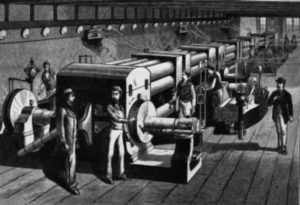
To do this, he came up with a simple, yet brilliant idea. He realized that for electric light to be cost competitive with gas lighting, he would have to share the cost of an electric power plant across hundreds of customers. So, it was on September 4, 1882 at 3 p.m. that Edison flipped a switch at 287 Pearl Street in Lower Manhattan and the world’s first electric grid went live. Only about 400 lights turned on that day but the idea behind that first grid in New York would go on to electrify the planet and improve the lives of billions of people.
Less celebrated is the fact that Edison’s grid had a dirty secret: it was powered by coal. Despite the miracle of affordable, flame-free lighting, neighbors soon tired of the noise and the smell of his coal power plant. Fortunately, Nikola Tesla and George Westinghouse commercialized a new kind of grid that could transmit electricity over hundreds of miles. Suddenly, coal plants could be built much farther away (and much larger). From this invention of long distance power, the modern grid was born. And for over a century, the model has remained largely unchanged.
GET MONTHLY NEWS & ANALYSIS
Unsubscribe anytime. We will never sell your email or spam you.
New York’s Reforming Energy Vision
That brings us to this moment in time. Solar power has become so inexpensive that it is beginning to challenge a century of coal. Solar is neither smelly nor noisy, so just like Edison’s original grid, power can once again be generated in the same community that uses it. Best of all, by reducing the incredible expense of long-distance power transmission, solar’s cost becomes even more competitive. And so, it’s only fitting that New York is once more becoming the birthplace of the latest Local Energy revolution.
This second era of Local Energy is a part of the state’s broader $5 billion Reforming the Energy Vision (REV) strategy. If Edison’s lightbulb was born from the perils of flame-based lighting, New York’s recent focus on local energy is catalyzed in part by the eye-opening aftermath of Superstorm Sandy.
In an interview with Utility Dive, Audrey Zibelman, who was CEO of New York State’s Department of Public Service at the time, explained: “When we launched REV in 2013 in the wake of Superstorm Sandy, we were acting upon Governor Cuomo’s directive to recreate an electric industry in New York that was prepared for major climatic events and could meet consumer demands for cost-effective, resilient, reliable, secure, and environmentally-sustainable electric power.”
The environmentally-sustainable goals are ambitious. REV targets shifting 50 percent of the state’s energy to renewables by 2030 and massively reducing greenhouse gas emissions. REV will make New York a global leader in next generation grids. InsideClimate News writer Leslie Kaufman says, “New York has launched a Herculean effort to turn around an antiquated system that has deterred innovation for generations by rewarding utilities for selling more electricity.”
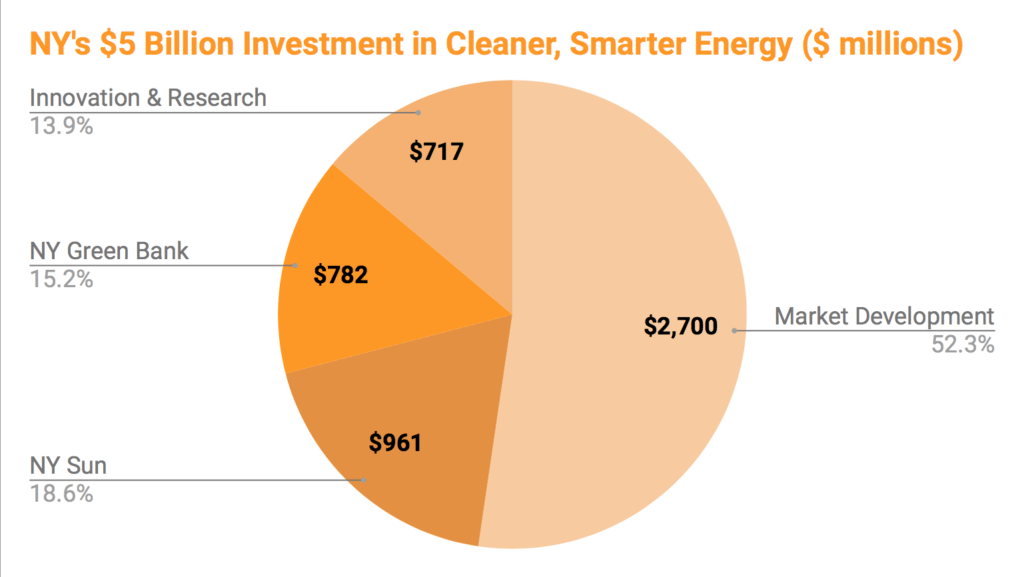
Four key areas where New York is leading the country in the local energy revolution, include:
Creating the future of microgrids.
New York has launched a first-of-its-kind NY Prize Competition. This is a three-stage competition open to local communities that helps to fund the winning communities’ feasibility assessments (in round one), the round-two communities’ microgrid designs, and ultimately, microgrid build-out.
Investing in Innovation.
New York isn’t just setting visions and passing laws, it’s investing in early-stage projects and companies. The state invested $10 million in clean energy incubators like ACRE, iClean and Directed Energy. These groups are off to a great start having already worked with 146 companies who, together, have attracted more than $250 million in third-party investments. One particularly interesting company out of the ACRE incubator (part of the Urban Future Lab) is called PowerMarket. This company is offering a complete customer management system for the rapidly expanding market of community solar (keep an eye out for my interview with the founders).
Additionally, New York is urging utilities to create demonstration projects that advance REV’s mission by collaborating with third parties (often scrappy startups) to develop scalable energy systems and technologies.
Retail choice.
While not unique to New York, Retail Choice is a set of regulations that effectively open up consumer (residential) electricity markets to competition. It deregulates and dramatically loosens the monopolies that have limited innovation and competition for the last century. To encourage cooperation with utilities, New York makes utilities eligible to be reimbursed for decreases in revenue caused by reduced demand that results from these energy initiatives. One of the most interesting new Retail Choice competitors is Drift, a venture capital backed startup that is innovating on the entire customer experience of electricity, from buying power to billing and customer support (stay tuned to read about my conversations with Drift’s CEO).
Bringing renewables within residential reach.
Like many other states, New York offers a myriad of incentives and tax credits to homeowners who install up to 200 kW solar systems as part of the NY-Sun Incentive Program. Affordable Solar is an income-eligible version of NY-Sun that nearly doubles the incentives offered by the parent program, making it even easier for low-income families to affordably install these systems (which lower their cost of living in the long-run).
New York is blazing a trail to the next generation of energy
REV makes it clear that the Empire State understands that the future of energy is more than just technology – it is a full spectrum of regulatory innovation, financing, utility-collaboration and, of course, all kinds of cool software and hardware technology, too. The rest of the US and the world should take notes on New York’s innovative approaches:
- Relatively small investments in startups, incubators, and demonstration projects can produced outsized results
- Microgrids are a centerpiece of the future grid and warrant specific focus and investment
- Regulations do not need to be zero-sum – they can promote competition and innovation at the same time ensuring a long term role for utilities and universal access
- Providing financing in key, targeted areas gives confidence for the much bigger commercial financing market to get behind clean energy
One hundred and thirty years after Edison lit up Lower Manhattan with the world’s first Local Energy system, New York is once again helping blaze the trail towards a better energy future.



